Occupational Hygiene Services
Protect your employees' long-term health and maintain safe occupational hygiene operations with Element's expert workplace monitoring services. Our certified hygienists provide comprehensive monitoring that includes air quality and noise monitoring, to identify and control workplace hazards before they impact your team. We help you create a safer workplace while ensuring full legal compliance, giving you peace of mind and your employees the protection they deserve.

What is Occupational Hygiene Testing at Element?
Occupational Hygiene for worker health protection is your solutions led approach to protecting your team and preventing workplace incidents. We help you identify risks early, implement effective safety measures, and create a healthier work environment for your employees.
Element's certified experts conduct comprehensive workplace monitoring using advanced, calibrated equipment to measure air quality, noise levels, and other hazards – from personal breathing zone sampling and static air monitoring to sound level meters and dosimeters – providing detailed technical reports that compare results against regulatory limits and deliver actionable recommendations for a safer workplace.
What can Element offer you for occupational hygiene services?
Key tests offered
Key tests offered
Element's comprehensive workplace monitoring services include air quality testing, noise level assessments, and exposure monitoring. We conduct detailed evaluations of airborne contaminants, measure sound levels in various workplace environments, and assess compliance with regulatory limits including COSHH and Noise at Work Regulations. Additional services include:
- Weld fume monitoring
- Diesel engine exhaust emissions testing
- Asbestos air testing
- COVID ventilation modeling
- Face fit testing
- Local Exhaust Ventilation (LEV) testing
- HAV & WBV Assessments Surveys
- Factory noise mapping
- Boundary noise monitoring
- EMF Surveys
- Human Health Risk Profiling
- Biological Surveys & Risk Assessments
- Office noise monitoring
- Personal exposure assessments
- Bioaerosol Monitoring
Methods and solutions offered
Methods and solutions offered
We combine personal and static monitoring approaches to provide comprehensive workplace assessment. For air quality, we use precision-calibrated equipment to sample breathing zones and fixed locations, with all analysis conducted at ISO-accredited laboratories. For noise, we conduct detailed measurements using both hand-held meters and personal dosimeters, producing technical reports with clear action plans.
Cutting-edge equipment we use
Cutting-edge equipment we use
Our testing equipment includes:
- Portable air sampling pumps
- Personal breathing zone monitors
- Sound level noise meters
- Personal dosimeters (DB meters)
- Static air monitoring equipment
- Precision-calibrated sampling devices
Which labs offer this service
Which labs offer this service
Our team operates from environmental testing hubs across the world, providing global access to our expert capabilities. Find out where your nearest environmental testing hub is on our Locations Page.
Beyond testing, we offer complete workplace safety solutions including training programs, gap analysis, and ongoing compliance support.
Standards we test to and what we test
- HSG173 Monitoring strategies for toxic substances
- HSG281 Electromagnetic fields at work – A guide to the Control of Electromagnetic Fields at Work Regulations 2016.
- EU Non-binding guide to good practice for implementing Directive 2013/35/EU Electromagnetic Fields: Volumes 1 & 2.
- MDHS 14/4 General methods for sampling and gravimetric analysis of respirable, thoracic, and inhalable aerosols (UKAS Accredited)
- MDHS 25/4 Organic isocyanates in air
- MDHS 47/3 Determination of rubber process dust and rubber fume (measured as cyclohexane-soluble material) in air
- MDHS 59/2 Machine-made fibers
- MDHS 83/3 Resin acids in rosin (colophony) solder flux fume
- MDHS 84/2 Measurement of oil mist from mineral oil-based metalworking fluids
- MDHS 86/2 Hydrazine in air
- NIOSH 5524 Metalworking fluids
- MDHS 91/2 Metals and metalloids in air by X-ray fluorescence spectrometry (Mercury)
- MDHS 95/3 Measurement of personal exposure of metalworking machine operators to airborne water-mix metalworking fluid
- MDHS 101/2 Crystalline silica in respirable airborne dust
- MDHS 102 Aldehydes in Air
- MDHS 104 Volatile organic compounds
- NIOSH 5000 Carbon Black
- NIOSH 5040 Diesel Particulate Matter (as Elemental Carbon)
- NIOSH 6015 Ammonia
- NIOSH 7300 Metal Elements by ICP
- NIOSH 7903, 7904. 7906, 7907, 7908 Methods for Sampling and Analysis of Airborne Inorganic Acids
- OSHA ID-214 Ozone In Workplace Atmospheres
- BS EN ISO 10882 Health & Safety in Welding and Allied Processes - Sampling of Airborne Particles and Gases in the Operator's Breathing Zone
- BS EN ISO 16000-4: 2004 Diffusive sampling and formaldehyde in air
- EN ISO 16000-6: 2011 VOCs in air by active sampling
- BS EN 16017-2: 2003 VOCs – indoor, ambient and workplace air by passive sampling
- BS EN ISO 16000-3: 2001 formaldehyde and other carbonyls in air by pumped sampling
Noise assessments
- UK noise assessments are qualified through the Institute of Acoustics and BOHS, in accordance with the UK HSE guidance L108 "Controlling Noise at Work".
- Our Singapore experts measure noise pollution in line with NEA (The National Environmental Agency) based on permissible noise limits.
Air monitoring
- HSG173 Monitoring strategies for toxic substances
- MDHS 14/4 General methods for sampling and gravimetric analysis of respirable, thoracic, and inhalable aerosols (UKAS Accredited)
- MDHS 25/4 Organic isocyanates in air
- MDHS 47/3 Determination of rubber process dust and rubber fume (measured as cyclohexane-soluble material) in air
- MDHS 59/2 Machine-made fibres
- MDHS 83/3 Resin acids in rosin (colophony) solder flux fume
- MDHS 84/2 Measurement of oil mist from mineral oil-based metalworking fluids
- MDHS 86/2 Hydrazine in air
- NIOSH 5524 Metalworking fluids
- MDHS 91/2 Metals and metalloids in air by X-ray fluorescence spectrometry (Mercury)
- MDHS 95/3 Measurement of personal exposure of metalworking machine operators to airborne water-mix metalworking fluid
- MDHS 101/2 Crystalline silica in respirable airborne dust
- MDHS 102 Aldehydes in Air
- MDHS 104 Volatile organic compounds
- NIOSH 5000 Carbon Black
- NIOSH 5040 Diesel Particulate Matter (as Elemental Carbon)
- NIOSH 6015 Ammonia
- NIOSH 7300 Metal Elements by ICP
- NIOSH 7903, 7904. 7906, 7907, 7908 Methods for Sampling and Analysis of Airborne Inorganic Acids
- OSHA ID-214 Ozone In Workplace Atmospheres
- BS EN ISO 10882 Health & Safety in Welding and Allied Processes - Sampling of Airborne Particles and Gases in the Operator’s Breathing Zone
- BS EN ISO 16000-4: 2004 Diffusive sampling and formaldehyde in air
Air Quality Contaminants:
- Airborne Dust
- Chemical Contaminants
- Irritants
- Sensitizers
- Carcinogens
- Welding Fumes
- Diesel Engine Exhaust Emissions
- Asbestos (via air testing)
- Bioaerosols
Noise Sources:
- Equipment Noise
- Engine Noise
- Factory Noise
- Office Noise
- Boundary/Perimeter Noise
- Workplace Background Noise
Ventilation & Air Flow:
- COVID-related Air Dispersion
- Local Exhaust Ventilation (LEV)
- General Workplace Ventilation
Your Challenges, Our Solutions
Legal Compliance Risk Management
Employee Health Protection Challenges
Complex Hazard Assessment Needs
Workplace Safety Documentation Requirements
Element Experts at your service
Why Choose Element
Highly Certified Specialists
ISO-Accredited Laboratory Analysis
Comprehensive International Standards
Advanced Precision Equipment
But don't just take our word for it
See what others have to say about partnering with Element
Frequently asked questions
How do you measure workplace noise levels?
Noise assessment uses specialist, calibrated equipment including hand-held sound level meters and personal 'dosimeters' (DB meters) worn by employees. These measure sound intensity in decibels (dB) or dB(A) during work activities.
What's included in your workplace assessment reports?
Our technical reports include: Description of workplace areas and activities Identification of areas exceeding exposure limits Calculation of daily individual noise exposures Detailed measurement data Noise mapping (where appropriate) Identification of hearing protection zones Comparisons to Workplace Exposure Limits (WELs) Actionable recommendations for improvement
What are employers required to do about workplace noise?
Under the Control of Noise at Work Regulations 2005, employers must:
- Provide employee information, instruction, and training
- Supply personal hearing protection
- Conduct regular health surveillance
- Stay within legal noise exposure limits
- Produce a noise control action plan
How do you conduct air quality sampling?
We use portable pumps to draw measured volumes of air through sample media positioned in an individual's breathing zone or in fixed locations for background measurements. All equipment is calibrated before and after sampling, with analysis conducted at ISO-accredited laboratories.
Element Occupational Hygiene Q&A with Parmjit Gahir

Explore our global network of labs and find your nearest location
VIEW ALL LOCATIONSRelated services
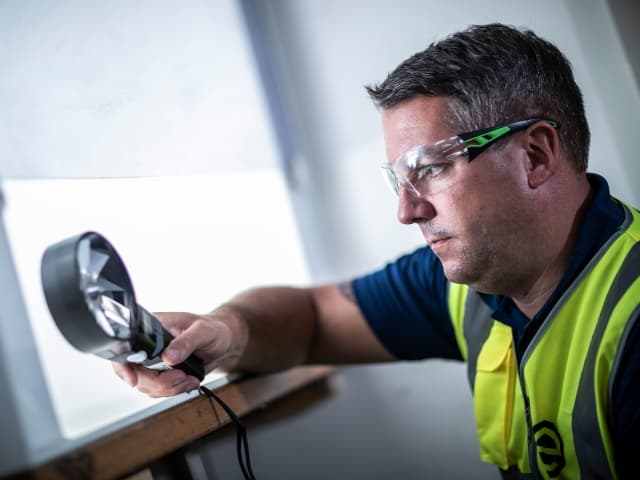
Local Exhaust Ventilation (LEV) Testing Services
Element's Local Exhaust Ventilation (LEV) testing services ensure full COSHH compliance with comprehensive system evaluations aligned to HSG258 guidelines. Our BOHS-qualified experts conduct thorough inspections to protect employee health, verify system performance, and provide actionable insights for optimization. With over 20 years of experience, we deliver trusted support for workplace safety and compliance.

Whole Body Vibration (WBV) & Hand-Arm Vibration Syndrome (HAVS) Assessment Service
Element provides expert Whole Body Vibration (WBV) and Hand-Arm Vibration Syndrome (HAVS) assessments to safeguard employee health and productivity. Our services ensure compliance with vibration regulations, prevent workplace health risks, and address ground vibration issues to protect properties and maintain safety in your operations.
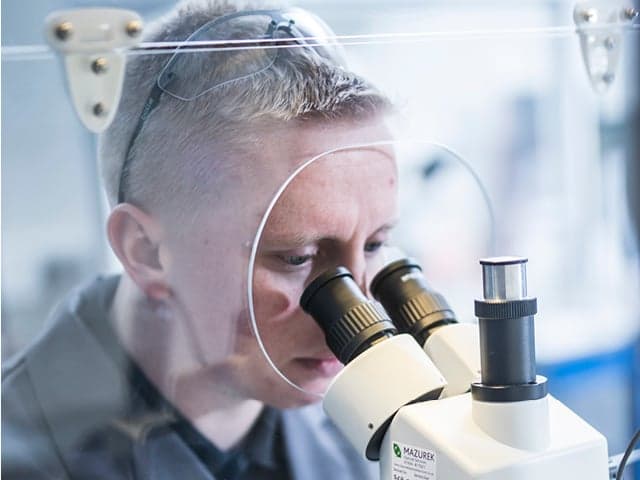
Asbestos Testing Services
Element offers a complete suite of asbestos testing, surveying and sampling services to help you achieve asbestos management compliance in buildings.

Welding Fume Exposure Monitoring Services
Element's welding fume exposure monitoring service helps protect your workforce and ensure HSE compliance. We provide comprehensive air quality assessments, including fume analysis and LEV testing, to identify and control exposure risks. Our expert team delivers tailored solutions, including risk assessments and training, to create a safe and compliant welding environment.

Diesel Engine Exhaust Emissions Testing
Element's Diesel Engine Exhaust Emissions Testing offers precise measurements, expert analysis, and actionable recommendations to meet COSHH compliance. Using accredited methods, we identify harmful exposure risks, protect employee health, and support workplace safety through tailored testing solutions led by qualified occupational hygienists.
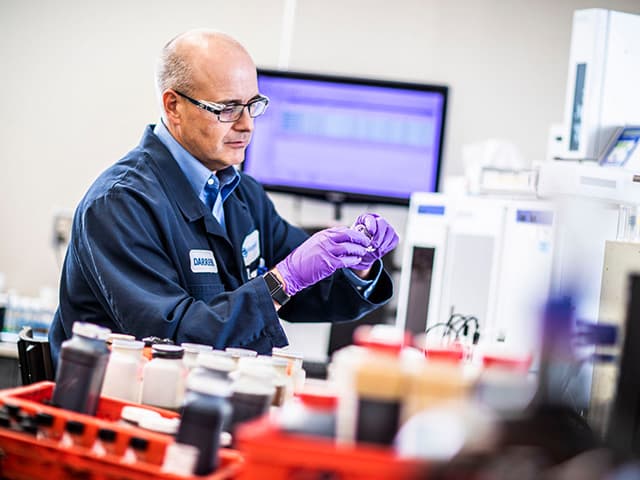
COSHH Risk Assessment & Regulations
Occupational hygiene experts at Element provide COSHH Risk Assessments to assess the risk to employees, helping you to comply with COSHH regulations.
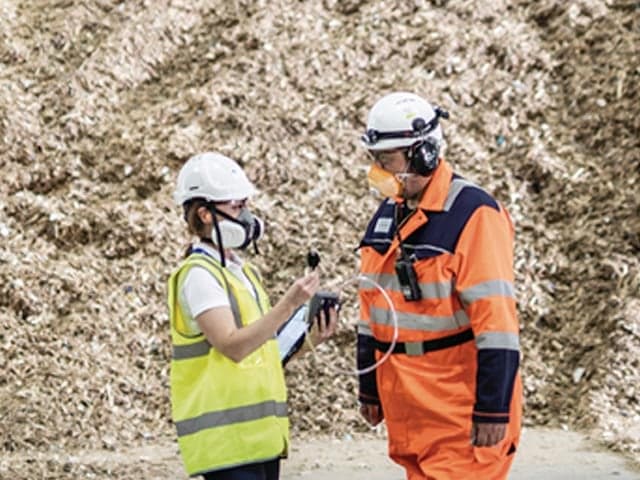
Face Fit Testing & Certificate for RPE Services
Element's face fit testing services ensure proper mask fitting for respiratory protection, delivering certified COSHH compliance. Our expert occupational hygienists provide quantitative testing and clear documentation to meet safety and legal requirements, with flexible scheduling and local support across the UK and Europe.

Legionella Risk Assessment
Water sources require monitoring for the presence of the Legionella pneumophilia bacteria and must undergo thorough Legionella risk assessments.

Breathing Air Quality Testing
Element's Breathing Air Quality Testing ensures safe, contamination-free air for workplace safety. Accredited under ISO 17025, we test all key contaminants while minimizing disruption through efficient, multi-service visits. Stay compliant with BS EN 12021 and safeguard employee health with Element's expert support.
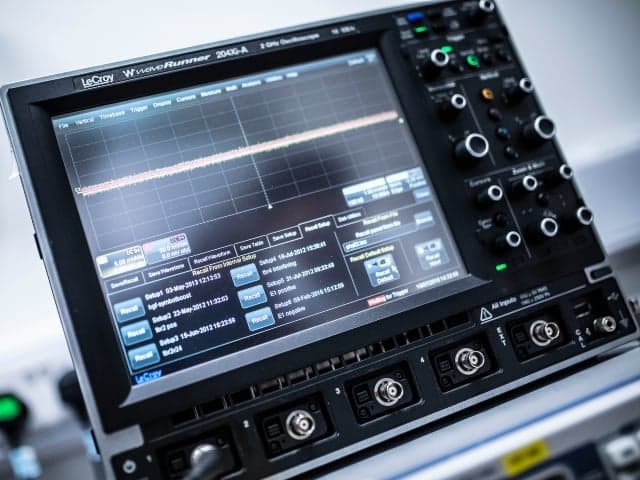
Electromagnetic Field (EMF) Surveys
Element's EMF surveys and risk assessments provide fast, reliable solutions to protect workers from EMF exposure, ensure regulatory compliance, and maintain operational efficiency. With over 20 years of expertise and nationwide coverage, we deliver detailed reports and actionable recommendations tailored to your workplace needs.
- Local Exhaust Ventilation (LEV) Testing Services
- Whole Body Vibration (WBV) & Hand-Arm Vibration Syndrome (HAVS) Assessment Service
- Asbestos Testing Services
- Welding Fume Exposure Monitoring Services
- Diesel Engine Exhaust Emissions Testing
- COSHH Risk Assessment & Regulations
- Face Fit Testing & Certificate for RPE Services
- Legionella Risk Assessment
- Breathing Air Quality Testing
- Electromagnetic Field (EMF) Surveys

